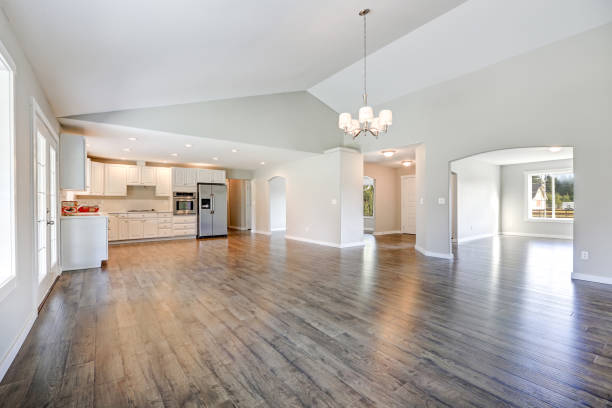Few things in the world of interior design have the ageless beauty and cosines of wood flooring. Wooden Laminate Flooring enhances the atmosphere and provide a hint of elegance whether they are in a contemporary apartment or a rural farmhouse. Choosing the perfect wood flooring, nevertheless, may be difficult given the abundance of possibilities on the market. Don’t worry, however, as we set out to reveal the key things to think about when selecting the ideal wood flooring for your room.
Knowing Laminated Wooden Flooring
In the middle of price and adaptability is the world of hardwood laminate flooring. With its several layers of synthetic material fused together to mimic the look of hardwood, laminate flooring is an affordable substitute without sacrificing style. Popular for high-traffic areas like living rooms and corridors, it is also easy to maintain. Technology developments have also given laminate flooring a higher degree of realism, accurately replicating the grain patterns and feel of genuine wood.
- Breakdown: Laminate flooring benefits include durability. Laminate flooring is a great choice for homes with kids and dogs because of its strong structure and scratch-resistant surface.
- Reasonably priced. Laminate alternatives are much less expensive than actual hardwood flooring, so homeowners may have the appearance of wood without going over budget.
- Easy Installation: Laminate flooring installs really easily because to its creative click-lock technology, which saves time and money on labor.
Getting About on Moisture-Resistant Floors
For areas like kitchens, baths and basements that are prone to humidity and dampness, Moisture Resistant Flooring becomes a ray of hope. These specialist floorings provide a workable answer for places where standard hardwood would fail since they are designed to withstand dampness and warping or swelling. In wet areas, there are plenty different choices available to people looking to combine style and utility in the ideal ratio. These range from engineered hardwood to vinyl planks.
Section: Moisture Resistance’s Fundamentals
Engineered Wood Multiple layers glued together under great pressure give engineered hardwood its improved resilience and the inherent beauty of wood. For areas where humidity levels fluctuate, its cross-grain design reduces the possibility of moisture-induced expansion and contraction.
Boards made of vinyl with its many styles and ability to withstand water, vinyl planks provide a workable answer for places that get wet. Modern printing techniques have allowed these synthetic flooring choices to remarkably mimic the appearance and feel of real hardwood, satisfying both practical needs and aesthetic tastes.
Header: Things to Think About
- surrounds: To choose the best kind of flooring, consider the humidity and moisture exposure levels of the planned area.
- Lifestyle: Take into account your way of life and the amount of foot activity in the area. In high-traffic areas, use sturdy flooring alternatives to guarantee durability and low upkeep.
- Create a budget that fits your means and look into flooring possibilities that provide the greatest value without sacrificing quality or style.
- Appeal to the Eyes Think about the general look of your room and your design tastes. Select wood floor coverings that enhance the atmosphere you want and go well with the current décor.
Conclusion
Choosing hardwood flooring means carefully balancing cost, style, and utility. Through knowledge of the subtleties of various flooring kinds and assessment of important considerations such durability, resistance to moisture, and design flexibility, homeowners may start a fulfilling path towards bringing the classic beauty of wood flooring into their homes. If you’re willing to explore the many possibilities of timber, you can find the ideal flooring solution whether you choose the moisture-resistant qualities of engineered hardwood or the more affordable appeal of laminate flooring.

